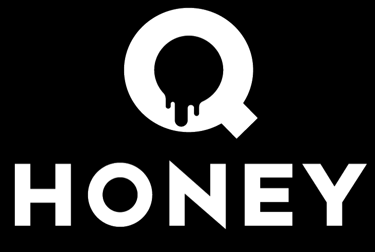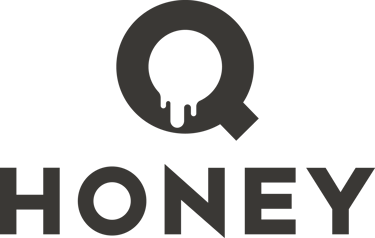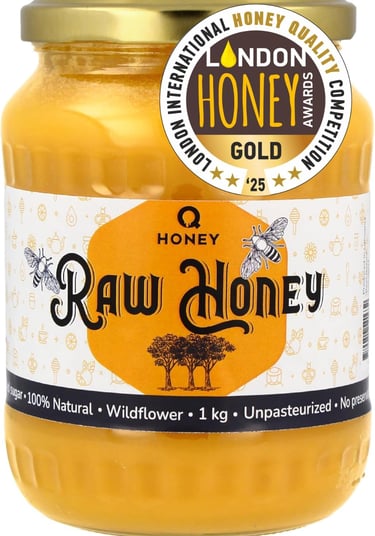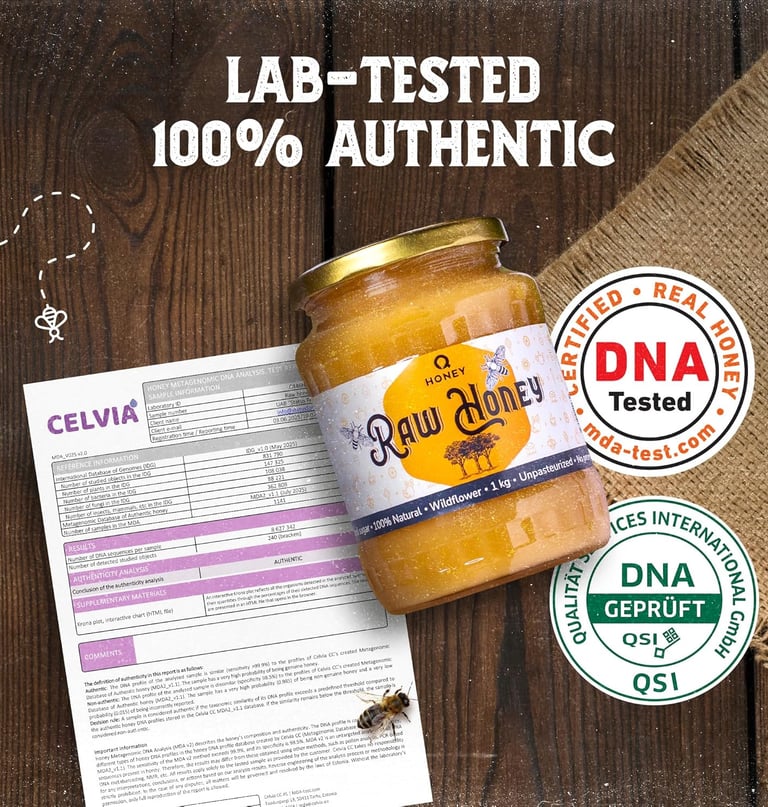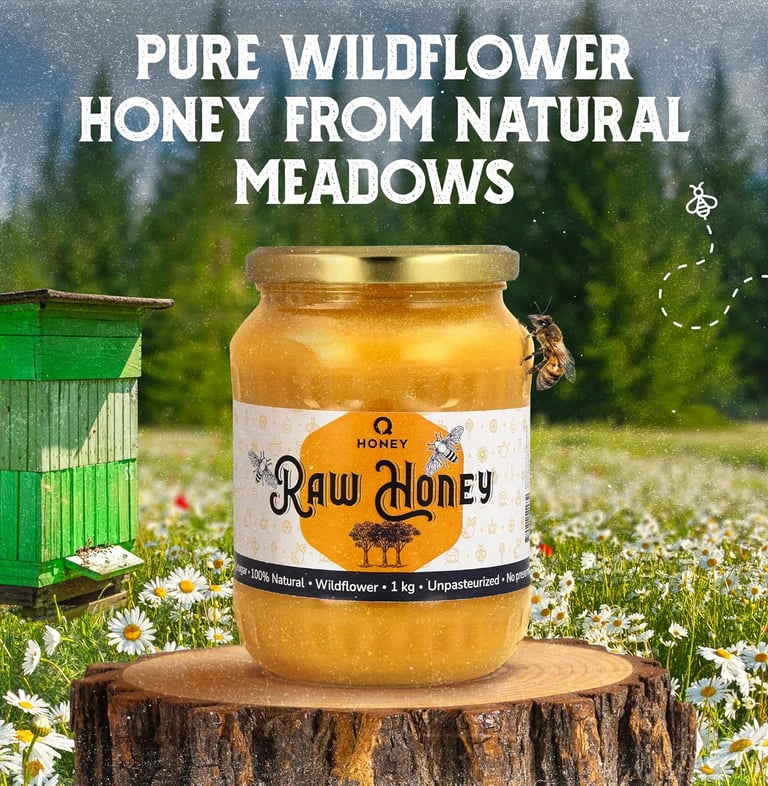Curious what makes our honey special? Find out now.
How to Spot Fake Honey: 5 Tests to Avoid Getting Scammed
9/18/20244 min read
Honey is one of nature's oldest sweeteners. It has been prized for centuries not just for its taste, but also for its natural health benefits. However, what many consumers don’t realize is that the honey on their supermarket shelves often isn’t what it seems. In fact, a shocking amount of honey sold worldwide is either adulterated, heavily processed, or downright fake.
In this post, we’ll show you how to protect yourself from honey fraud. We’ll break down five reliable at-home tests to help you spot fake honey. We’ll also reveal what real honey should look, taste, and behave like. And finally, we’ll introduce you to a Raw, Award-Winning Honey that passes every authenticity test with flying colors.
Why Fake Honey Is a Real Problem
Fake honey is more than just a marketing scam. It can mean consuming additives like glucose syrups, sugar water, artificial flavors, or even rice syrup. In the worst cases, it can be contaminated with antibiotics or heavy metals.
You’re not just getting ripped off; you’re also potentially putting your health at risk.
Governments and food authorities across the globe have cracked down on honey fraud in recent years. Yet it persists. The only real protection? Becoming an educated, skeptical buyer.
How to Tell If Honey Is Fake: 5 Simple Tests
Let’s be honest: not everyone has access to a food lab. But there are simple and surprisingly effective ways to spot fake honey at home. None are 100% conclusive on their own, but together they form a powerful set of tools.
1. The Water Test
Real honey is dense and doesn’t dissolve easily in water. Try this:
Fill a glass with room temperature water.
Add one tablespoon of the honey.
What you should see:
Raw, real honey will sink to the bottom and stay intact for a while before slowly dissolving.
Fake honey? It dissolves instantly or mixes into the water quickly, especially if it's cut with sugar syrup.
2. The Flame Test
Real honey is flammable (yes, really), because it has low moisture content.
Dip a cotton bud or matchstick in honey.
Shake off excess.
Try lighting it with a match or lighter.
Real honey: The bud or stick should catch flame and burn briefly.
Fake honey: The moisture prevents it from lighting at all.
(Warning: Please exercise caution. Don't do this test near anything flammable.)
3. The Crystallization Test
Over time, real raw honey crystallizes. It's a natural process caused by its high glucose-to-water ratio.
If your "honey" has been sitting in your cupboard for months and is still perfectly liquid, that’s a red flag.
Fake honey: Either doesn’t crystallize at all or takes an unusually long time due to added moisture or processing.
Real honey: Begins to crystallize over weeks or months, especially in cooler weather. This is a sign of quality, not spoilage.
4. The Thumb Test
This old-school test is fast and easy:
Place a drop of honey on your thumb.
Real honey: It stays intact and doesn’t run all over.
Fake honey: Spreads immediately or runs off quickly due to its thinner, watered-down consistency.
5. Label Check: Look for Clues
Before you even buy the honey, inspect the label like a detective.
Watch out for:
Words like "blend," "honey syrup," or "honey product"
Ingredients lists that include anything other than honey
No origin specified
Real, high-quality honey should come with a transparent source. It should mention where it was harvested and how it was processed (or rather, not processed).
What Real Honey Should Look Like
Let’s recap.
Real honey is:
Thick and viscous
Slow to drip
Crystallizes over time
Has floral or earthy aroma
Has complex flavor notes depending on the season and flowers
Fake honey is:
Too smooth or syrupy
Overly sweet with little flavor complexity
Always clear and liquid
Label is vague or misleading
Now that you know how to spot the frauds, the next step is choosing a honey you can trust.
Not All Honey Is Equal: Why Q Honey Stands Out
Q HONEY is a premium wildflower honey sourced from the pristine forests and meadows of Lithuania. It’s as raw and real as honey gets—and it has the awards to prove it.
Here’s why Q HONEY is worth your attention:
✔ 100% Raw and Unfiltered
Q HONEY isn’t heated, filtered, or pasteurized. That means it retains all the natural enzymes, nutrients, and antioxidants that are stripped out of mass-market brands.
✔ From Wild Blossoms, Not Factory Farms
This honey is produced by bees that roam untouched wildflower fields, not monoculture crops. That biodiversity is what gives Q HONEY its uniquely rich, floral flavor.
✔ Naturally Crystallizes
One of the easiest ways to spot real honey is crystallization. Q HONEY crystallizes beautifully over time—a hallmark of purity.
✔ Award-Winning Quality
This is not just another pretty jar. Q HONEY took home the Gold Medal in the 2025 London International Honey Quality Competition. It’s a mark of international trust and quality.
✔ 1kg Glass Jar for Serious Honey Lovers
Most honey jars are 250g or 500g. Q HONEY offers a full 1kg glass jar—a generous amount for daily use, baking, and more.
✔ Sustainable and Ethical
Buying Q HONEY means supporting beekeepers who practice ethical, sustainable beekeeping that protects both pollinators and ecosystems.
Final Thoughts: Trust Your Tastebuds, But Test the Product
The honey industry is flooded with fakes. But now you’re equipped with five practical, at-home ways to tell the difference. Don’t fall for a fancy label or low price.
Real honey takes effort, time, and care to produce—and it shows in the taste, texture, and even the way it crystallizes.
When in doubt, go with a brand that ticks all the boxes: raw, unfiltered, sustainably sourced, and independently awarded for its quality.
That’s exactly what you get with Q HONEY.
You deserve real honey. Not syrup in disguise.
Quicklinks
Support Pages
📞 (+370) 6 051 3872
Contact
Vytauto 80, Šiauliai,
Lithuania 76352
